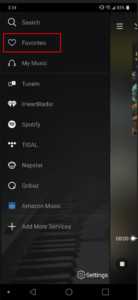The S6's crossover is a variable low-pass filter, and will not adjust the audio for the RCA output connection. This is a full range line level output.
The S6’s crossover is a variable low-pass filter. This means it variably adjusts how high the S6 will play. Unless the subwoofer is pretty far away, you can usually leave the phase switch set to 0°. When setting up a new S6, I like to start with the crossover all the way counter clockwise and, with some music I'm familiar with playing, first get the volume "about" right. After that try making very small adjustments clockwise on the crossover, evaluating each small change from where you'll be listening from most often. Once it starts sounding like you can localize where the sub is coming from, back it off until you can't again. You may also need to lower the volume a touch after the crossover is dialed in, or perhaps even while you're dialing it in, depending on the acoustics of the room you're in, and your own preference on how present you'd like the sub to sound.
Audioengine powered speakers have fixed passive crossovers designed specifically for them; this simply means that they are designed to play the frequency range they produce, so it's not necessary to alter this when adding a subwoofer. Adding a subwoofer, such as the S6, will pick up where the speakers leave off, extending the low end response.
Yes! You would just need an amp, like our N22, to supply power to the P4 speakers and connect to the S6.
View the short video below to see one of our quality control technicians connect the HD6 left and right channels.
When you first open the app, on the main menu there is a "Favorites" link. However, this is not tied to any specific service, and is used for saving favorites songs you have stored locally (either on your source device or elsewhere on the same network).

If looking for previously saved stations, like those found within TuneIn or iHeartRadio, then you would want to check the 'favorites' while you are within the corresponding application.
- A1-MR uses your home WiFi network to stream music directly from the cloud or from an Apple Airplay source. A1 is a traditional Bluetooth speaker where music is streamed directly from your phone or other Bluetooth ready devices.
- Your phone, tablet or computer controls the music being played on both systems. However, since the A1-MR is connected to music services through the internet directly, once playing it will act like a traditional radio. This frees up your phone for calls and does not drain the battery.
- The A1-MR can be synchronized with other A1-MRs or the Audioengine B-Fi, creating a whole home solution with independent volume zones.
- A1-MR uses the Audioengine Control app for initial setup while no product app is required for A1.
Bluetooth uses “lossy compression”, meaning that some audio data is lost. In most cases, this is imperceptible. Depending on the music service, WiFi can deliver lossless CD quality audio to the A1-MR.
The A1-MR is a powered speaker system with WiFi streaming built in. The B-Fi has access to the same streaming services, but it is an adapter designed to connect to an existing music system.
Both systems receive the same high-fidelity streams from your favorite services. Since the B-Fi is designed to enable streaming on an existing music system, the sound quality will depend largely on that system.
Yes, while streaming via Airplay or Spotify Connect (with a premium subscription).
The Audioengine Control app supports a maximum of 12 rooms, however for most homes we recommend 8.
After setup you can stream your music anywhere within your WiFi network range.

 B1 Next Gen Bluetooth Music Receiver
B1 Next Gen Bluetooth Music Receiver